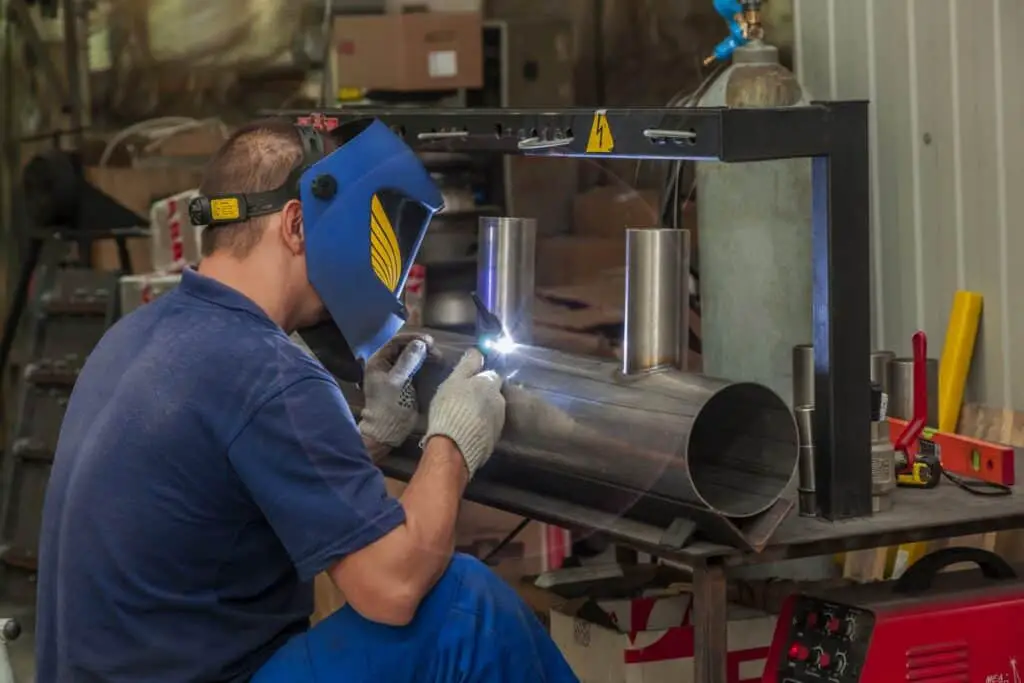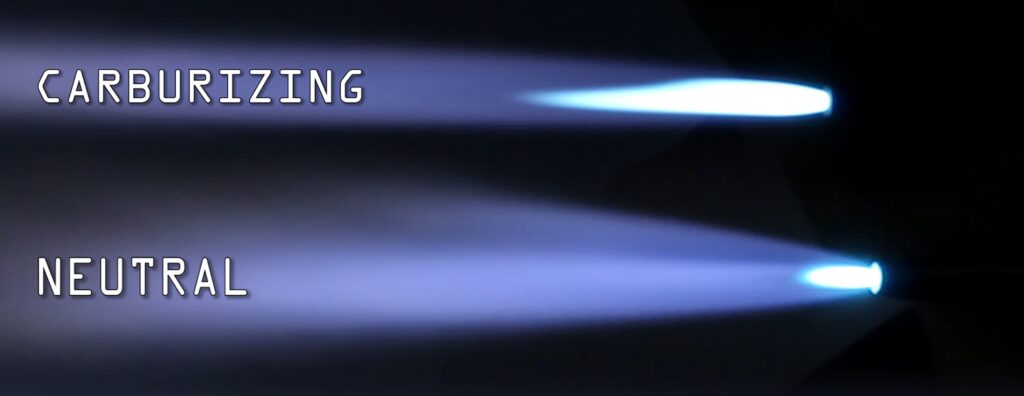Carburizing is a manufacturing process which results in the hardening of surfaces of the metals that it carburizes. It contributes to case hardening or surface hardening of the base metals.
But this ultimately results in the interior of the metals to remain soft while creating the tough protective layer.

You should avoid a carburizing flame when welding steel because this particular flame has an excess of acetylene in it due to which it adds carbon to the puddle while welding and as a result the weld becomes harder than the base metal that is steel.
But despite this, carburizing is used to weld low carbon steel and we will learn the reason behind this in this article!
Also, we will learn the best flame to weld steel and the applications of carburizing in various fields…
Which is the best description of a carburizing flame?
In an oxy-acetylene mixture, when there is an excess of acetylene gas rather than the consumed oxygen it produces a gas that is rich in acetylene. This is how a carburizing flame is produced. This type of flame is also called reducing flame.
A carburizing flame is used to weld or braze metals that do not absorb carbon. This flame burns at 550 degree F.
What is a carburizing flame used for?
A carburizing flame is a reducing oxy-fuel gas flame. There is an excess of fuel gas in a carburizing flame that results in a carbon rich zone that extends surrounding the cone.
A carburizing flame is used while the process of hardfacing to join the base metal and weld metal without deep melting of the original (base) metal. It is used to weld high carbon steel and alloys such as nickel and monel.
In other words, a carburizing flame is used to weld alloys that are easily oxidized such as aluminium. What happens in the process is that while the oxygen is increased and the fuel is turned down, the carburizing feather pulls off and then just disappears.
What is the difference between a neutral flame and a carburizing flame?
A carburizing flame also called the reducing flame is the one that adds carbon to the molten metal. Whereas, a neutral flame is the one in which there is an abundance of oxygen that is enough for burning. While in carburizing flame reduction occurs, in a neutral flame neither oxidization nor reduction occurs.
What type of flame is best for welding steel?
For welding steel, the flame that is considered the best is the neutral flame.
Neither oxidizing, nor a reducing flame can be used to weld steel. In case of oxidizing flame, the steel will become porous and cracked and in case of a reducing flame the welded area will be harder than the base metal.
Is carburizing flame used while welding steel?
Yes, a carburizing flame is used to harden the exterior of low carbon steel and this is done by the addition of carbon atoms to the base steel metal through the use of a carburizing flame.
The added carbon atoms will increase its hardness by either of the following two processes:
-
-
- It will become a part of the exterior surface of the metal itself by forming an outer martensitic steel layer or pearlitic steel layer
- It will form carbide after getting combined with the rest of the elements in the alloy
-
Ultimately it will get permanently attached to the metal as it cools down and form a protective shell that will neither break or get scratched easily.
Advantages of using carburizing flame:
Carburizing hardens the exterior of the metals which has the following advantages:
-
-
- It hardens the exterior of low carbon steel and iron alloys
- Carburized metal parts will be able to resist abrasions effectively
- Carburized sharp tools will be protected against chipping
- Carburizing enhances the wear-resistance capacity of metals and tools
-
Applications of carburizing:
Due to the surface hardening capability of a carburizing flame, it is widely used in a variety of industries such as:
-
-
- It is used in woodworking
- It is used in oil industry
- It is used in gas explorations
- It is used in the machining industry to increase the shell life of metal machines and equipment
- It is widely used in maritime, aerospace and automotive industries
-
Ending notes:
You see though carburizing flame is not suggested in steel, still it finds a number of usages for low carbon steel and other alloys because for its surface hardening capacities.
Therefore, a carburizing flame can only be used in steel if you want to get a tough and durable surface but not while joining steel with other metals!
That’s all for this article!
Hope to see you in our next column!
Till then, take care, stay safe and…
Have a great day ahead!







